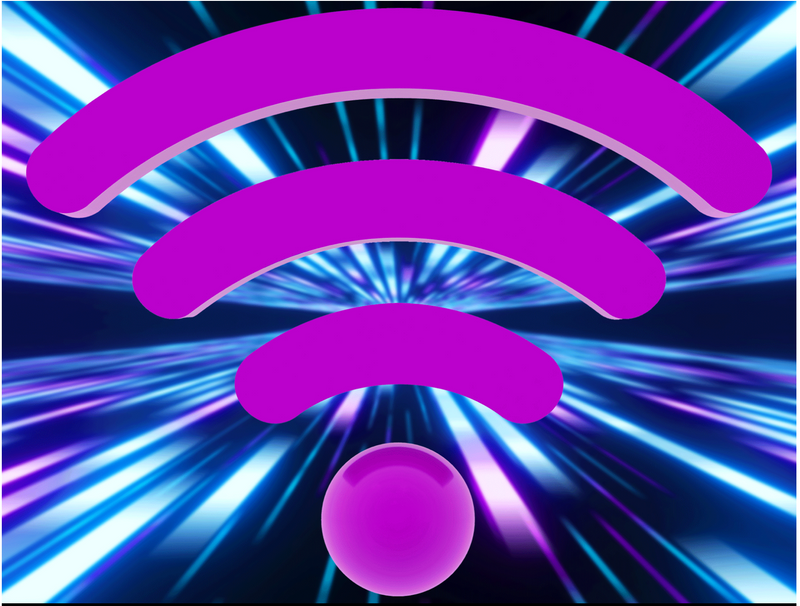
After having a fiber-optic internet connection in my home and office for many years, I tend to take for granted the superfast connectivity speeds of all of my wired and wireless devices. Whenever I mention streaming and wireless connection speeds to my clients Im often countered with a question “What can I do to get my internet speed faster?” followed by a general statement ” our internet is slow”.

Pakedge is a premium brand of Networking equipment.
To my surprise, I was a little caught off guard by how many people actually have this issue, so I thought it would be beneficial to write a guide explaining why these issues exist and what can be done to improve your internet and Wifi Connection speed. Most everyone in our service area, (Murrieta, Temecula, Menifee and the rest of Southwest Riverside County, CA ) receives their internet from one of two ISPs (internet service providers). It is either Frontier or Spectrum, both offering Gigabit Speeds. Frontier recently started offering 2 GBPS internet in our area as well. With that said its not uncommon for a client, friend or family member to hit me with the following; “I have the same provider. Did you pay extra?” “How did you get that speed? Mine’s so slow.” “Ugh, I’m having a lot of connectivity issues with my fiber.” So why are they all struggling with their internet? Doesn’t the fiber company provide them with the same service as me? Does the technician check their connection and download speeds when he finishes the install?
An estimated 25.1 million U.S. households had fiber service in 2021, according to the Fiber Broadband Association. Providers are rolling out gigabit (1,000 megabits) and even multi-gigabit internet to more cities. President Biden’s infrastructure bill aims to expand fiber-optic networks across the country. (Many rural areas are waiting for any high-speed option at all.)
Fiber-optic internet speeds can be significantly faster than cable, DSL or satellite. To experience the advertised bandwidth, however, you need specific gear. Your equipment, or where it is installed in your home, could be contributing to those slower data rates.
If you want to get the most out of your fiber internet, here’s what you need to know.
Get the Right Gear
When setting up your connection, your internet service provider installs a little box, called an optical network terminal or ONT. Most people with Frontier FIOS service can connect the ONT right to their own router with an Ethernet cable. Others, such as many Spectrum customers, might need to connect their router to a modem-like gateway offered by the service provider.
The router and cables you choose could slow you down.
Look for text printed on the side of your Ethernet cable. You’ll need at least a Category 5e cable (abbreviated as “Cat 5e”), which supports a gigabit connection for up to 100 meters.

Cat6 patch cables are available in various lengths and in multiple colors.
Category 6e cables can support even faster multi-gigabit connections at longer lengths. If you’re looking to future-proof your house, We advise deploying Cat 6e or Cat6a cable. Vertical Cable through its partner, Theater Monster is a great source for High Speed Cat6 cables which are available in a variety of colors.
Your router also needs to support high speeds. Visit the manufacturer’s website and look for “gigabit” in the model’s name or description. If not, you’ll need a new one. (More on that below.) Also, if you are relying on equipment from your service provider, you should consider buying your own, which could be better, and even cheaper over time.
Go Wired Where You Can
The most reliable way to get the fastest internet possible? Connect your device to Ethernet. You can check your speeds at Fast.com
When my laptop is connected to Wi-Fi and I’m sitting right under my gigabit-capable Araknis AN-810 Wireless Access Point, my best download speeds are up to 800 megabits per second. But with an Ethernet cord, my download speeds are almost always at the full bandwidth of the one-gigabit connection.
For devices that don’t move around your home but are in fixed locations, use Ethernet. This includes TVs, game consoles or the computer at your desk.
Most routers have an extra port for an Ethernet connection, but that might not be enough. You can add ports to a router with a network switch hub, such as Araknis An-110-SW-C-5 ($92). (Don’t forget, it must be gigabit-compatible, too.) A switch allows more gadgets to access an Ethernet connection and also creates a local-area network, or LAN, where the devices can talk to each other.
So your setup could look something like this: fiber-optic terminal (ONT) > Cat6 Ethernet cable > Gigabit Router > Cat6 Ethernet cable > Gigabit network switch > Cat6 Ethernet cable > Gigabit Wireless Access Point > computer/TV/game console.
OVRC is a tool allowing end users and custom integrators the ability to monitor and troubleshoot wifi and internet issues on the fly. This tool has saved Theater Monster countless hours in troubleshooting time by allowing us to diagnose issues remotely and get alerts from devices that drop offline.
Running a bunch of cables doesn’t have to mean tearing up your walls. But it can be a pain, and the cords are unsightly. Cord covers that attach to walls with adhesive can help. Some are even designed to look like baseboard molding. Most newer homes are prewired with Cat5e Cable at the bare minimum, which can be used to send internet throughout your home without having to run any additional cables. For those homes that are not wired with Cat5 Cable, There are low voltage cabling installers that can assist in running structured cabling throughout your home.
Plot Your Wi-Fi Plan
Simply put, as you move further away from your router or wireless access point your internet connection speed will become slower.
Wi-Fi is also susceptible to interference. Where your router is placed can make a significant difference in speed and signal strength. That is why we generally recommend a system that includes several Wireless Access Points (WAPs) to spread the wifi signal evenly across your home eliminating dead zones.

We typically stay away from Netgear’s Orbi and the Amazon-owned Eero mesh Wi-Fi systems. The Orbi AX4200 ($549 for a router-and-node pair) Because of their lack of processing and routing power. They also do not make for very reliable wifi speeds because meshing wifi only amplifies a weaker signal. The further you get down the line the slower the speeds you’ll experience. That is why we strongly recommend using hard wired access points instead of mesh type systems. With a hard wired connection to each access point you are able to send out the entire 1gbps+ internet speed from each WAP giving you a superior wifi experience throughout your home.
Araknis has two WAP product that we love: The AN-510-AP-IW-AC (an In-wall WAP Perfect for fitting over an existing CAT5/6 Wall Plate) or the Araknis AN-810-AP-I-AC (an extremely high speed WAP for Large areas supporting multiple users simultaneously)

Araknis Wireless Access Points install cleanly to the ceiling of your home or office and provide super fast wifi speeds with incredible reliability.
Araknis has an App called OVRC Home which allows for the control and monitoring of your home’s network. The OVRC Network automatically recognizes connected devices on your network and allows for troubleshooting and monitoring, as well as remote rebooting.

The OVRC App is a convenient and easy tool to help watch and manage the devices that are connected to your network.
The placement of the main router is often confined to a closet or garage, where service providers often install the optical network terminal. If you are getting fiber installed, ask your technician if the terminal can be in a more central location.
Routers and Wireless Access Points Should be located:
- At least Three to 4 feet above the floor
- Out in the open, not in a cabinet
- Away from electronic equipment, metal or major appliances
- Ideally separated by a couple of rooms or different floors for multiple access point setups
Additionally if the router has antennas, they must be aligned in a certain manner to provide the best coverage, so follow the manufacturer’s directions.
If things are still slow, follow tech support’s golden rule: Turn everything off and on again.
—For more Theater Monster Tech Info, reviews, advice and headlines, sign up for our weekly newsletter.
Write to Nathan Goldstein at nate@theatermonster.com
More stories
Why you should have your tv professionally installed
The Importance of Professional TV Installation: Safeguarding Your Investment In today’s technologically driven world, a television is not just ...
